When it comes to finding that perfect feline companion, you might be curious about which breeds truly stand out. From majestic Bengals to the rare Dwelf, a dazzling array of cats not only look extraordinary but also possess unique personalities that make them wonderful additions to your home. Each breed brings its own charm, style, and quirks, making the world of cats both captivating and varied.
You’ll discover that some cats boast stunning appearances, like the Abyssinian with its striking coat, while others, such as the Serengeti, carry wild essence in their lineage.
Beyond looks, the characteristics and temperaments of these breeds can vary dramatically, helping you choose the right kitty that fits seamlessly into your lifestyle.
As you explore the coolest cat breeds, you’ll gain insights into their care, health, and the special affection they can bring into your life.
You might just find your new best friend among these fascinating felines.
Key Takeaways
- Unique cat breeds vary in appearance and personality.
- Certain breeds are well-suited for specific lifestyles.
- Understanding care requirements is essential for any cat owner.
Understanding Cat Breeds
When exploring cat breeds, you’ll discover a fascinating world of domestic and purebred varieties.
This knowledge helps you appreciate the diversity and uniqueness of these furry companions.
Domestic Cats and Purebred Cats
Domestic cats are the most common household pets, bred for companionship rather than specific traits.
They can come from various backgrounds, often mixed between different breeds.
These cats typically exhibit diverse behaviors and appearances.
On the other hand, purebred cats are recognized by specific breed standards, established by cat associations.
Breeds such as Siamese, Persian, and Bengal are examples.
Each purebred cat has distinct characteristics, like coat patterns and temperament, that make them stand out.
| Type | Example | Traits |
|---|---|---|
| Domestic Cat | Alley Cat | Varied appearance and behavior |
| Purebred Cat | Bengal | Unique coat, playful nature |
What Defines a ‘Cool Cat’
When you think of a “cool cat,” consider both appearance and personality.
These cats often have striking looks or uncommon features, like the Sphynx’s hairlessness or the Savannah’s wild cat lineage.
Temperament is equally important.
Traits like playfulness, sociability, and intelligence make a cat appealing.
Breeds like the Bengal may capture your heart with their energetic antics, while the Dwelf charms with its unique stature.
Ultimately, a cool cat is one that resonates with your lifestyle and preferences.
Some popular traits of cool cats include:
- Playfulness: Active and engaging.
- Sociable Nature: Enjoys interaction with people and other pets.
- Unusual Appearance: Unique features that catch the eye.
Iconic Cat Breeds
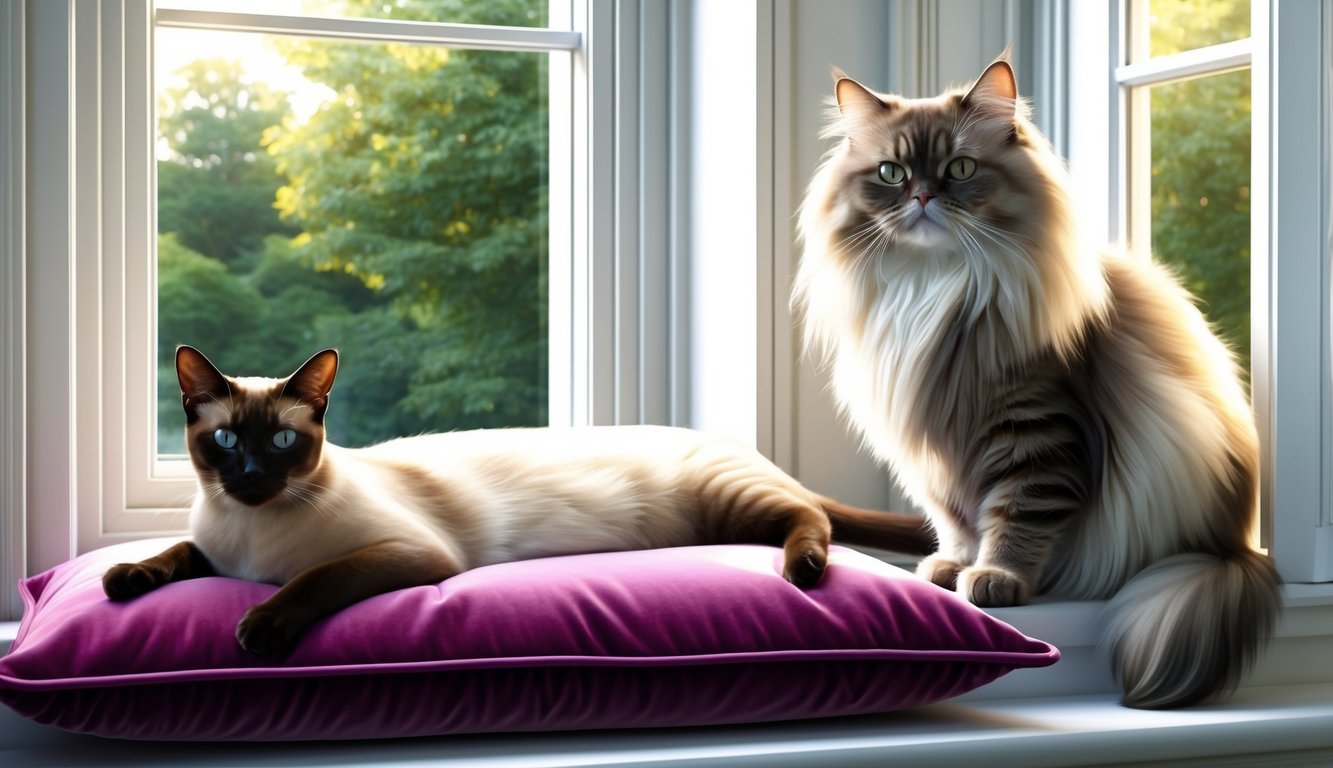
When it comes to iconic cat breeds, a few stand out due to their unique features, temperaments, and enduring popularity.
Each breed brings something special to the table, making them beloved choices for many cat lovers.
Persian: The Majestic Feline
Persian cats are renowned for their luxurious, long fur and distinctive flat faces.
Their serene and gentle nature makes them perfect for quieter households.
You’ll often find them lounging around, enjoying a calm environment.
These felines require regular grooming to maintain their beautiful coats.
You should brush them daily to prevent matting and reduce shedding.
Persians are affectionate and often form strong bonds with their owners, making them loyal companions.
Maine Coon: The Gentle Giant
Maine Coons are one of the largest domestic cat breeds.
They have robust, muscular bodies and tufted ears, giving them a striking appearance.
Despite their size, they have a remarkably friendly and sociable disposition.
These cats are known for their playful antics and can live harmoniously with children and other pets.
Maine Coons also enjoy interactive play and mental stimulation.
Their thick, water-repellent coats require occasional grooming to keep them looking their best.
Siamese Cats: The Chatty Companions
Siamese cats are famous for their striking blue almond-shaped eyes and short, sleek coats.
They are incredibly vocal and love to “talk” to their owners, often expressing their opinions and desires with a range of sounds.
These cats are highly social and thrive on interaction.
They enjoy being part of family activities and can often be seen following you around the house.
Their playful nature and intelligence mean they excel in learning tricks and engaging with diverse toys.
Ragdoll Cats: The Floppy Friends
Ragdolls are known for their docile and laid-back personalities.
Their striking blue eyes and semi-long fur give them a regal appearance.
These cats are famous for their tendency to go limp when picked up, earning them the name “Ragdoll.”
They are affectionate and tend to follow their owners from room to room.
Ragdolls typically get along well with children and other pets, making them a great choice for families.
Regular grooming is essential to keep their fur free from tangles and to maintain their health.
Unique Fur and Coat Types
When it comes to cat breeds, fur and coat types can add a distinctive flair to their appearance.
Here, you’ll explore three unique categories: hairless cats like the Sphynx, the fluffy long-haired breeds, and the striking Bengal cat.
Sphynx: The Hairless Peculiarity
Sphynx cats stand out with their completely hairless bodies.
Their skin feels warm and soft, showcasing a variety of colors and patterns.
Although they lack fur, they still require regular bathing to remove oils that accumulate on their skin.
These cats are renowned for their sociable and affectionate nature.
They often seek human companionship, making them ideal for families or individuals looking for an interactive pet.
Their unique appearance, combined with an engaging personality, makes Sphynx cats truly peculiar and unforgettable.
Long-Haired Cats: The Fluffy Breeds
Long-haired cats are adored for their luxurious, flowing coats.
Breeds like the Ragdoll and Maine Coon are prime examples, boasting silky fur that can reach impressive lengths.
The stunning colors and patterns can vary widely, from solid to intricate color-point variations.
Caring for these beautiful cats involves regular grooming to prevent matting and maintain their coats.
This routine also gives you a chance to bond with your cat.
Their fluffy fur not only enhances their charming looks but also brings a sense of warmth and comfort to your home.
Bengal Cat: The Wild Appearance
Bengal cats are famous for their exotic appearance, resembling wild leopards.
Their coats display stunning patterns, which can include vivid spots and marbling.
These patterns give the Bengal a distinctive edge among domestic cats.
The coat of a Bengal is short and dense, requiring minimal grooming compared to long-haired breeds.
Bengals are active and playful, often found climbing or exploring their surroundings.
This combination of looks and personality makes them a favorite among cat enthusiasts seeking a unique companion.
Rare and Exotic Breeds
In the world of cats, rare and exotic breeds offer unique personalities and striking appearances.
These felines stand out for their heritage and specialized traits, making them intriguing companions for pet lovers.
Norwegian Forest Cat: The Nordic Beauty
The Norwegian Forest Cat is a striking breed known for its thick, water-resistant coat and tufted ears.
Originating from Norway, this breed evolved to thrive in cold climates.
They typically weigh between 12 to 16 pounds and can reach heights of 12 to 18 inches.
Key Traits:
- Temperament: Friendly and playful, making them great family pets.
- Activity: They enjoy climbing and exploring, reflecting their natural instincts.
Their lush fur requires regular grooming to prevent mats.
With a robust build and gentle nature, this cat is ideal for active households.
Abyssinian Cat: The Ancient Breed
The Abyssinian Cat is one of the oldest known breeds, believed to have originated in ancient Egypt.
Characterized by their short, ticking coat, they come in various colors, though ruddy is the most popular.
Weighing 8 to 12 pounds, these cats are both graceful and agile.
Key Features:
- Intelligence: Highly curious and intelligent, they often engage in playful antics.
- Social Nature: They thrive on interaction and can get quite chatty with their humans.
This breed needs mental stimulation and enjoys challenging toys.
Their unique appearance and lively personality make them a cherished addition to any home.
Turkish Van: The Swimming Cat
The Turkish Van is renowned for its love of water, which is unusual for most cats.
They have a soft, semi-longhaired coat that is predominantly white with colored markings on the head and tail.
This breed usually weighs between 10 to 20 pounds.
Notable Characteristics:
- Playfulness: Known for their enthusiastic play, especially involving water.
- Affectionate: These cats form strong bonds with their owners and enjoy being involved in family activities.
Regular grooming is beneficial to keep their coat in top shape.
If you’re looking for a fun-loving companion, the Turkish Van is definitely worth considering.
Rarest Cat: Uncommon Finds
Among all breeds, certain cats are classified as rare due to their limited population.
Examples include the Khao Manee and the Sokoke, both known for their striking features and unique histories.
Rarity Highlights:
- Khao Manee: Known for its diamond-like eyes, available in blue or gold.
- Sokoke: Originating from Kenya, it has a distinctive coat and active demeanor.
These rare breeds often require special care and are sought after by dedicated cat enthusiasts.
Owning a rare breed means embracing their unique traits and ensuring their well-being.
Distinctive Physical Traits
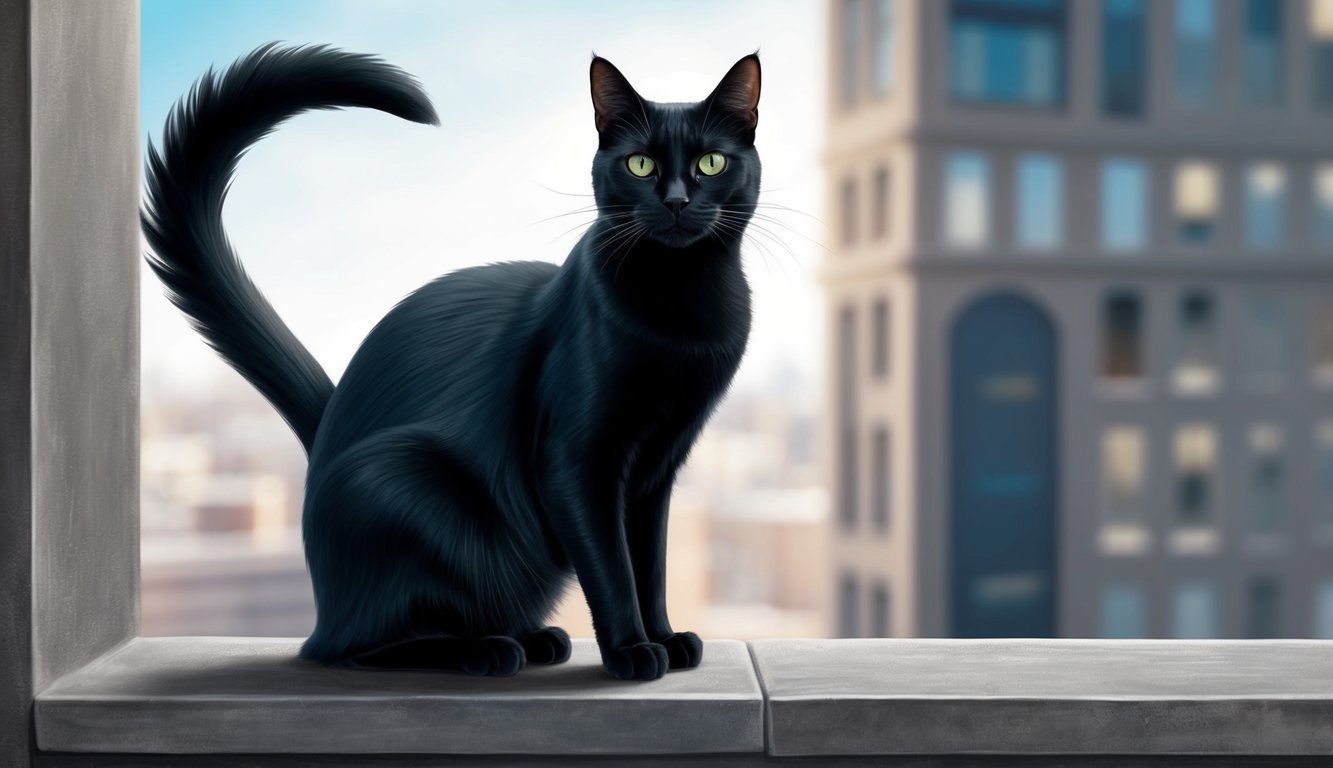
Feline breeds can stand out due to their unique physical traits.
Here are some examples that showcase how distinctive features contribute to their charm and personality.
Scottish Fold: Unique Ears
The Scottish Fold is instantly recognizable for its folded ears, which give it a distinctive appearance.
These ears bend forward and down, creating an almost “owl-like” look.
This trait results from a genetic mutation affecting cartilage.
Their round faces and large, expressive eyes make them particularly endearing.
Scottish Folds are known for their sweet, calm demeanor, making them wonderful companions.
In addition, their soft, plush coats can vary in color and pattern, further enhancing their overall appeal.
Munchkin: The Short Stature
Munchkins are most famous for their short legs, which are a result of a genetic mutation.
These cats typically have bodies that are proportionate to their short limbs, maintaining a balanced appearance.
This unique trait allows them to be quite agile, as they can run and play just like other cats.
You’ll find them to be playful and social, thriving in the company of humans and other pets.
The Munchkin comes in various colors and patterns, adding to their charm and character.
Manx: The Tailless Wonder
Manx cats are known for their lack of a tail, a characteristic that sets them apart from other breeds.
This taillessness, which can vary from a complete absence to a small stump, is caused by a genetic mutation.
Their rounded bodies and robust legs contribute to their sturdy appearance.
Manx cats also have a distinctive gait, as they often hop due to their powerful hind legs.
This breed is affectionate and loyal, making them great family pets.
American Bobtail: The Short-Tail Charmers
American Bobtails have a distinctive short tail, often compared to that of a bobcat.
This feature gives them a strikingly wild look while still being domestic.
Their physical build is muscular, with a broad head and strong neck.
American Bobtails are intelligent and adaptable, often forming strong bonds with their owners.
Their coats can be short or long, in various color patterns, making each one unique.
Personality and Temperament
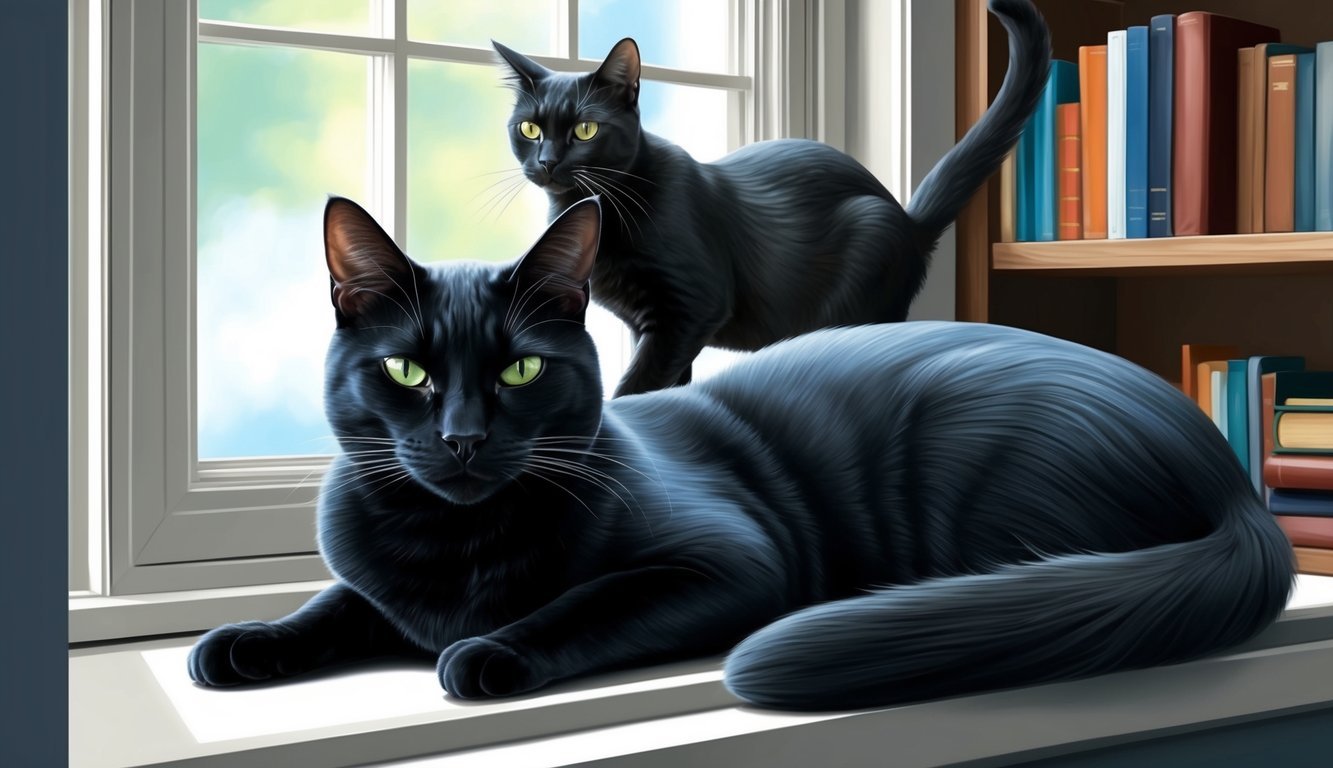
Cats have distinct personalities that can vary significantly by breed.
Understanding the temperament of different breeds helps you find a feline that best fits your lifestyle and preferences.
Here’s a closer look at some of the coolest cats and what makes their characters unique.
Birman: The Composed Playmate
Birmans are known for their gentle and composed nature.
These cats often form strong bonds with their owners and thrive on companionship.
You’ll find them to be playful yet calm, making them perfect for families and singles alike.
They enjoy engaging in interactive play, such as chasing a feather toy or participating in gentle games.
Birmans are not overly demanding but appreciate attention and affection.
Their mild manner makes them great with children and other pets, ensuring a harmonious household.
Oriental Shorthair: The Social Butterfly
Oriental Shorthairs are famous for their outgoing personalities.
These cats are highly social and crave interaction, making them ideal for active households.
You’ll often find them following you around, eager to join in on your activities.
Their playful and curious nature means they love exploring their environment.
They are also known to be vocal and will communicate their needs and desires effectively.
With an Oriental Shorthair, expect a lively companion who thrives on human interaction and enjoys meeting new friends, both feline and human.
Siberian Cat: The Adventurous Spirit
Siberian cats embody a sense of adventure and curiosity.
With their strong, robust build, they are playful and energetic, often engaging in playful antics.
They love to climb and explore their surroundings, keeping you entertained with their antics.
These cats are also quite intelligent, enjoying puzzle toys that challenge their problem-solving skills.
Siberians appreciate family time but are equally content to entertain themselves.
Their friendly disposition allows them to get along well with other pets, making them versatile companions.
Burmese: The People-Oriented Feline
Burmese cats excel in social settings and are known for their affectionate nature.
They thrive on human interaction and love to be part of your daily activities.
Expect a Burmese to be by your side, seeking companionship and affection at every turn.
These cats are playful and adaptable, easily engaging in games or simply lounging in your lap.
Their charming personality makes them ideal for families, as they often enjoy the company of children and other animals.
You’ll find that a Burmese cat can quickly become the heart of your home.
Cat Breeds for Different Lifestyles
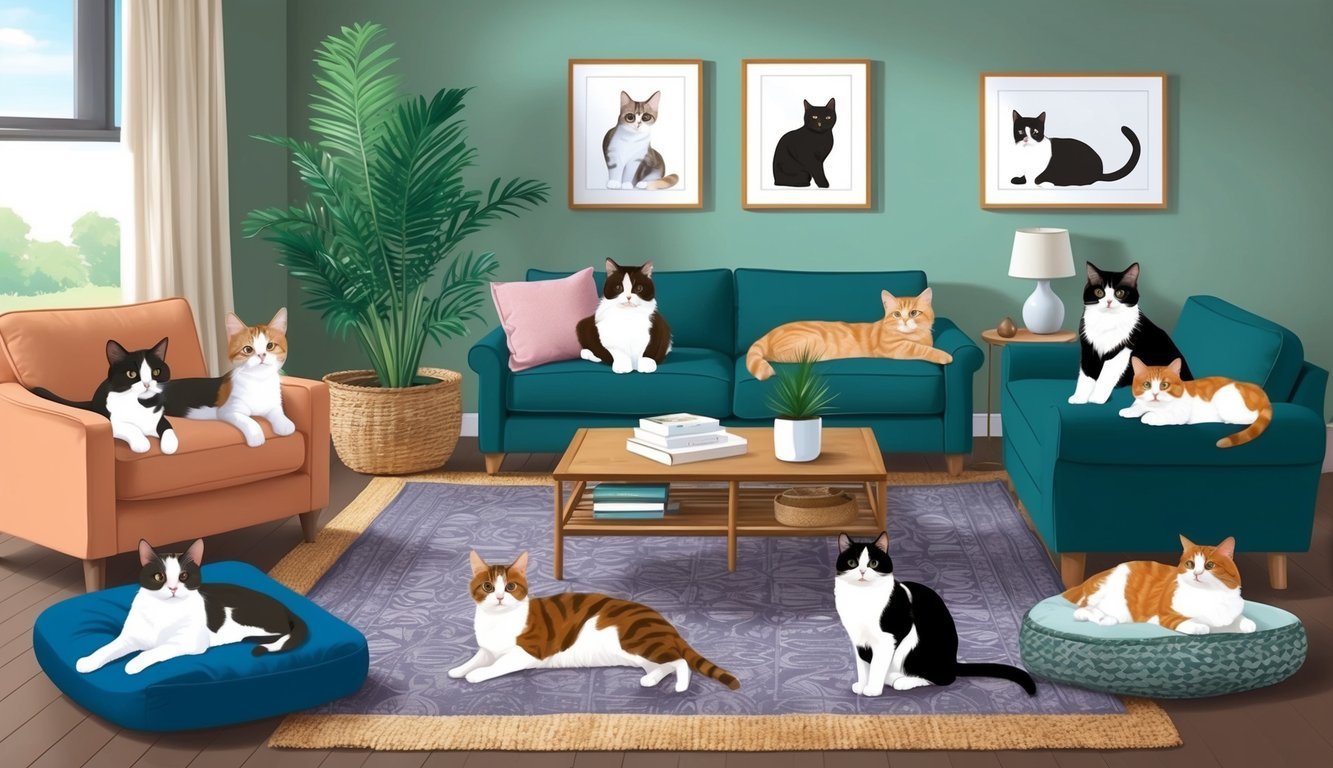
Choosing a cat breed that fits your lifestyle can enhance your living experience.
Each breed has unique traits and needs that cater to various lifestyles, so consider what suits you best.
Savannah Cat: The Dynamic Pet
Savannah cats are energetic and curious.
They are a mix between a domestic cat and a serval, which gives them a striking appearance and a playful nature.
Key Traits:
- Energy Level: High
- Social Needs: Loves interaction, thrives with active families
- Skillset: Can learn tricks and enjoys playing fetch
If you lead an active life, a Savannah cat will match your pace.
They need plenty of playtime and mental stimulation, so having toys or climbing trees is essential.
This breed tends to bond well with other pets and even enjoys adventures outside when securely harnessed.
Devon Rex: The Playful Mischief
Devon Rex cats are known for their playful and affectionate behavior.
Their unique appearance, with curly hair, endears them to many cat lovers.
Key Traits:
- Energy Level: Moderate
- Social Needs: Very social, good with children and pets
- Skillset: Intelligent, enjoys interactive toys
These cats love to engage in playful activities and may even learn to walk on a leash.
Their sociable nature allows them to fit well into a family setting.
To keep their mischievous side in check, offering various toys and activities is crucial.
They thrive on attention and will often follow you around the house.
British Shorthair: The Easygoing Companion
The British Shorthair is ideal for those seeking a calm and relaxed companion.
Known for their round faces and sturdy build, they are gentle and easygoing.
Key Traits:
- Energy Level: Low to moderate
- Social Needs: Prefers peace but enjoys occasional interaction
- Skillset: Adaptable, doesn’t require extensive playtime
Their laid-back attitude makes them perfect for quieter households or those with less time for play.
British Shorthairs enjoy lounging around but will also join you for short play sessions.
They are independent and do well alone for extended periods, making them a great choice for busy individuals or families.
Himalayan Cat: The Quiet Housemate
Himalayan cats are serene and fluffy, perfect for those who appreciate a calm atmosphere.
Their gentle personality complements their striking blue eyes and long fur.
Key Traits:
- Energy Level: Low
- Social Needs: Enjoys human companionship but values alone time
- Skillset: Affectionate, enjoys quiet cuddling sessions
These cats prefer a peaceful environment and pursue restful activities.
They are best suited for those who can provide a calm space and enjoy spending quiet evenings together.
While they love affection, they are not overly demanding, making them good pets for busy households that appreciate companionship without high maintenance.
Health and Care Considerations
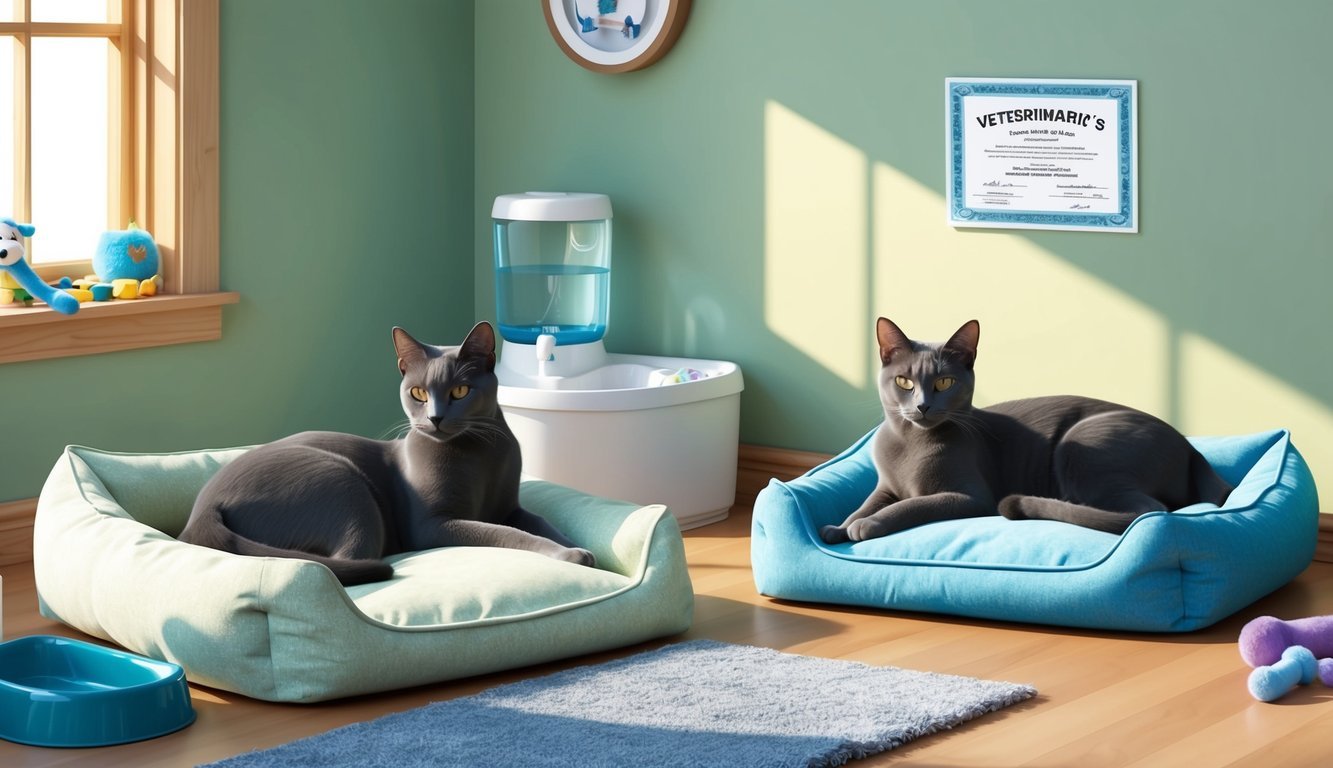
Taking care of your feline friend involves understanding their specific health and care needs.
Each breed has its own requirements, so it’s vital to stay informed, especially if you have a Sphynx or any other purebred cat.
Sphynx Cat Care: Special Requirements
Sphynx cats are unique not just for their lack of fur but also for their specific care requirements.
Because they have no hair to absorb oils, you will need to bathe them regularly, about every week or two.
Skin Care Tips:
- Use a gentle, vet-approved shampoo.
- Be sure to clean the folds in their skin to prevent irritation.
Additionally, Sphynx cats can be sensitive to temperature.
Keep your home at a comfortable temperature and provide cozy spots for them to snuggle.
Regular vet visits are crucial to monitor their skin health and overall well-being.
Common Health Issues in Purebreds
Purebred cats, including the Sphynx, may be prone to specific health issues.
Understanding these can help you proactively manage your cat’s health.
Common Conditions to Watch For:
- Hypertrophic Cardiomyopathy (HCM): A heart condition common in many purebreds.
- Respiratory Issues: Due to their genetic makeup, some breeds can have breathing difficulties.
Regular check-ups and keeping an eye on your cat’s behavior—like changes in appetite or activity—can help catch these problems early.
Maintain a healthy lifestyle for your cat through regular exercise and proper nutrition.
Dietary Needs for Cool Cat Breeds
Feeding your cool cat breed the right diet is essential for their health.
Each breed can have different nutritional needs based on age, size, and specific health concerns.
Recommended Dietary Choices:
- Look for high-quality, protein-rich cat food.
- Consider wet food for hydration as many cats do not drink enough water.
Canned food can provide vital moisture content, typically around 78% water.
It’s essential, particularly for breeds like the Sphynx, that may be prone to urinary tract issues.
Regularly consult your vet about the best dietary options for your specific breed to ensure they stay healthy and happy.
Cat Breed Evolution
Understanding the evolution of various cat breeds gives insight into their unique traits and characteristics.
Each breed has its own history, from ancient origins to modern developments shaped by selective breeding.
Selkirk Rex: The Latest Developments
The Selkirk Rex is a relatively new breed, recognized for its curly fur and playful nature.
Originating in Montana in the 1980s, this breed was discovered when a breeder found a litter of kittens with unusual curly coats.
Through breeding these curly-coated cats with Persians, British Shorthairs, and Exotics, the Selkirk Rex developed distinct features.
They stand out not only for their appearance but also for their friendly and social temperament.
Today, the breed is increasingly popular among cat enthusiasts, showcasing how modern breeding practices can create unique traits.
Chartreux: The Historical Breed
The Chartreux has a rich history that dates back centuries.
This breed is known for its striking blue-gray coat, copper or gold eyes, and robust build.
Originating in France, Chartreux cats were likely kept by monks in monasteries, known for their excellent hunting skills.
Their adaptation to various environments over time contributed to their strong and resilient nature.
As a breed, they are characterized by a gentle yet playful disposition.
The Chartreux exemplifies how historical happenings can influence the development of a cat breed.
LaPerm: The Curly-Coated Cat
The LaPerm is distinct for its curly, soft fur that feels unique to the touch.
This breed emerged in the 1980s in Oregon, where a hairless kitten named Curly was born to a farm cat.
Breeders began to select for this gene, resulting in the LaPerm we know today.
These cats can have varying degrees of curliness, ranging from tight curls to loose waves.
Besides their fascinating coat, LaPerms are known for their affectionate and sociable nature, making them great companions.
They showcase how genetic mutations can lead to entirely new breeds.
Serengeti and Burmilla: Modern Creations
The Serengeti and Burmilla represent exciting developments in cat breeding.
The Serengeti was created by crossing Bengal cats with Oriental Shorthairs.
This breed aims to capture the wild look of big cats, featuring spots and a long body while maintaining a friendly temperament.
Conversely, the Burmilla arose from an accidental mating between a Chinchilla Persian and a Burmese cat.
This breed is celebrated for its striking coat variations and playful demeanor.
Both the Serengeti and Burmilla illustrate how breeders today continue to innovate, combining traits from different breeds to create something new and delightful.
Adoption and Fostering
Adopting or fostering a cat can be a rewarding experience.
It not only offers you companionship but also gives a deserving animal a chance at a better life.
Understanding the right breed and the process of fostering can help you make informed decisions.
Finding a Coolest Cat Breed to Call Your Own
When looking for a cat, consider what characteristics you want in your new friend.
Some of the coolest cat breeds include:
- Sphynx: Known for their hairless appearance, they are affectionate and love to cuddle.
- Bengal: With their stunning spotted coats, Bengals are energetic and playful.
- Maine Coon: These gentle giants are friendly, sociable, and come with a luxurious fur coat.
Visit local shelters or rescues to find specific breeds or mixes.
Many organizations like Cool Cats Rescue focus on finding homes for overlooked animals.
They often have a variety of breeds and can help you match your lifestyle to a cat’s needs.
The Process of Fostering Cats
Fostering cats involves providing a temporary home where they can thrive until they find permanent placements.
Here’s how to get started:
- Reach Out: Connect with local shelters or rescues, such as Best Friends Animal Society or Cool Cats Rescue.
- Application: Complete a fostering application; you may need to specify your environment and availability.
- Training and Support: Many organizations offer training to help you care for your foster cat, particularly if they have special needs.
- Home Preparation: Create a safe space with basic necessities like food, a litter box, and comfortable bedding.
Through fostering, you play a crucial role in socializing and caring for these animals.
Each experience can be uniquely rewarding, especially when you see them off to their forever homes.
Conclusion
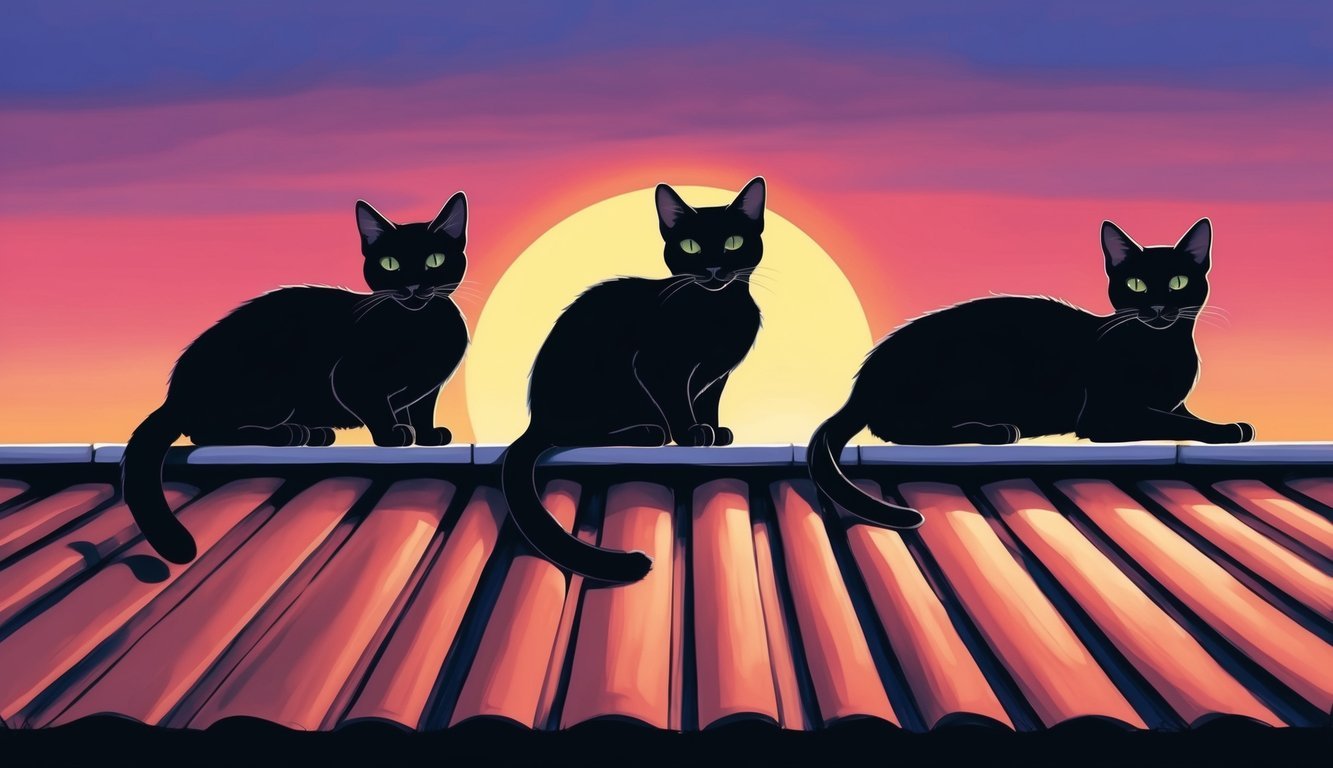
When thinking about the coolest cats, consider not just their looks but also their personalities.
Each breed has its unique traits, quirks, and charm.
Here’s a quick rundown:
Cool Cat Breeds to Consider
- Bengal: Known for their leopard-like spots and energetic behavior.
- Sphynx: Hairless, affectionate, and quite the character.
- Maine Coon: Large, friendly, and known for their tufted ears.
Traits that Make Cats Cool
- Independence: They thrive on their own, giving you space.
- Playfulness: Engaging and active, they keep you entertained.
- Affectionate Nature: Some cats are surprisingly cuddly.
You might find that the coolest cat for you aligns with your lifestyle.
If you live in an apartment, breeds like the British Shorthair are great companions.
Remember, adopting a cat means embracing a unique personality.
Seek out a breed that fits your vibe, and you’ll have a wonderful companion.
Frequently Asked Questions
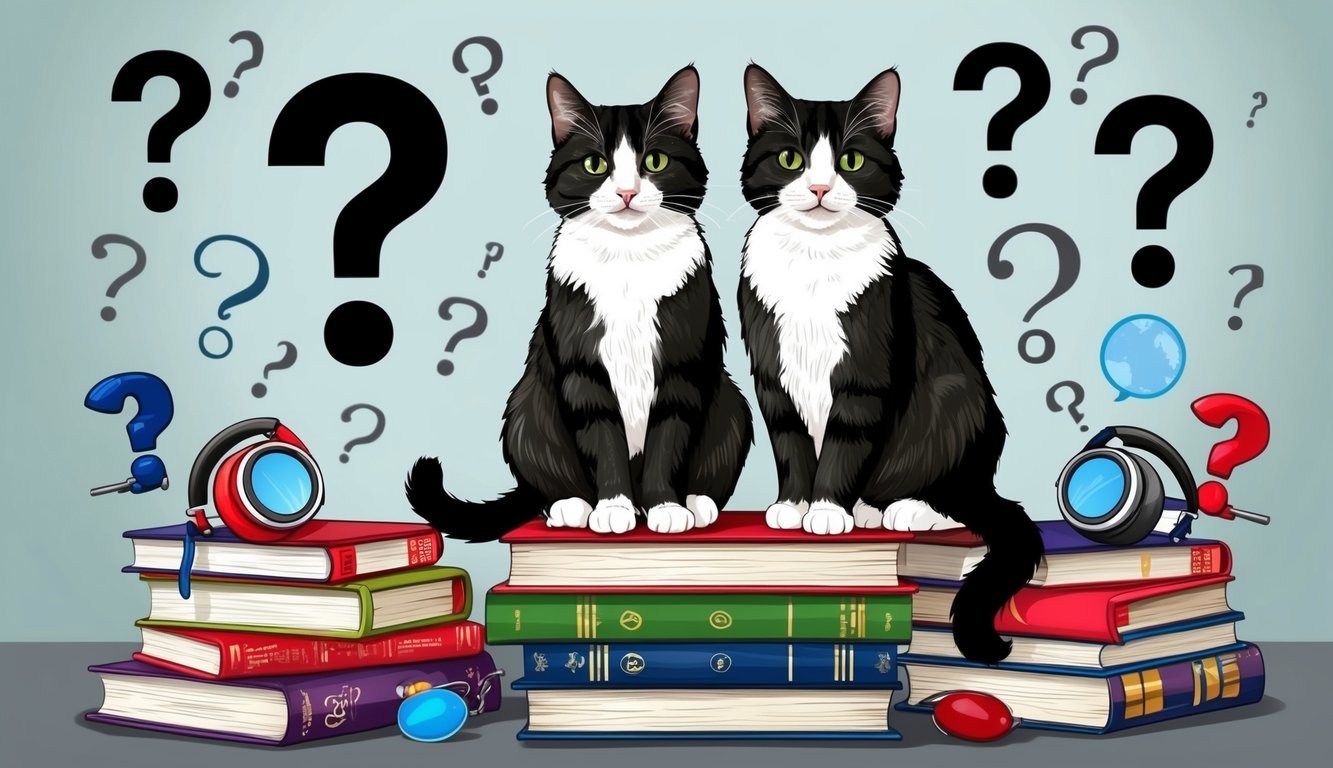
You might have some questions about unique and extraordinary cat breeds.
Let’s explore some popular options along with their distinctive traits and characteristics.
What are some top-rated cat breeds known for their unique appearance?
Several cat breeds stand out for their unique looks.
The Sphynx is famous for its hairless body and large ears. Scottish Folds have distinct folded ears that give them an adorable expression. Bengal cats sport beautiful, spotted coats resembling a wild leopard.
Which wild cat species are considered the most extraordinary?
Among wild cats, the Siberian tiger is known for its powerful physique and striking stripes.
The Snow leopard is unique with its beautiful greyish coat and long tail, adaptable for cold environments.
The Cheetah, famous for its speed, has unique black tear marks and is the fastest land animal.
Can you name a few rare cat breeds that are not commonly seen?
There are several rare cat breeds worth mentioning.
The Lykoi, also known as the “werewolf cat,” has a unique partial hairlessness. Khao Manee is a stunning breed from Thailand, typically with striking blue or odd-colored eyes.
Another rare breed is the Savannah, which is a cross between a domestic cat and a serval.
What breed of cat is typically the most laid-back and easygoing?
The Ragdoll is often recognized for its calm and affectionate nature.
They tend to go limp when held, which adds to their laid-back reputation.
This breed is known to be gentle and great with families.
Which domestic cat has the most unique traits and characteristics?
The Sphynx again stands out with its hairlessness and warm, friendly demeanor.
It’s known for being very social and often seeks human interaction.
Their unique look and playful personality make them beloved among many cat owners.
What are some exotic and beautiful cat breeds that capture attention?
Several exotic breeds are sure to catch your eye.
The Bengal is not only beautiful but also athletic, with a coat that shimmers in sunlight.
The Egyptian Mau features striking spots and is one of the few domesticated breeds with a natural spotted coat.


